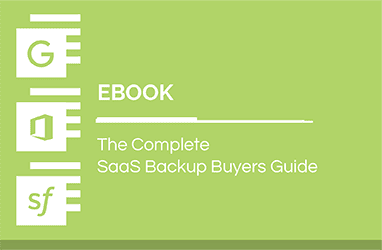What is SaaS Metadata, and Why Do You Need to Protect It? Part I
If you’re a SaaS application administrator (for example, you manage Google for Work, or Salesforce, or Office 365) and don’t know much about the importance of metadata for your SaaS apps, you’re not alone. When I’ve spoken with user groups and customers, I’ve found that even experienced admins and MVPs don’t always understand how critical SaaS metadata is to their job – and to the success of their organization.
So, I was inspired to help educate on the topic of metadata. In this blog series, you’ll learn:
- The basics about SaaS metadata
- How it differs from traditional metadata
- What would happen if it’s lost or stripped out when data is archived
- What to do to keep your metadata protected
By definition, metadata is a set of data that describes and gives information about other data. Traditional metadata may be structural (i.e., describing whether a value is fixed or delimited), or descriptive (i.e., a geotag where a digital photo was taken) – but it’s generally consumed by machines, not humans. As Robin Bloor wrote, “In essence the main problem with metadata is that it’s not as meaningful as it needs to be for users to know exactly what the data is.”
That’s not necessarily the same for born-in-the-cloud applications. SaaS metadata, more so than traditional metadata, contextualizes data for humans as well as machine processes. It’s increasingly being used to control collaboration and drive new services like Microsoft’s Delve and Google’s Inbox. This means understanding metadata is vital for SaaS admins.
For SaaS applications that are messaging and collaboration tools – i.e., Google for Work, Office 365 – metadata plays a vital role in enabling collaboration and control, as it contains information about sharing settings, labels, tags, and ownership. All of these are important for allowing the right people, internally or externally, to easily find and use SaaS data. Additionally, new innovations such as Microsoft’s Delve and Google’s Inbox are leveraging metadata to provide a better, more contextual experience for users.
For SaaS CRMs like Salesforce, metadata is not only important in contextualizing data, but it contains information about how your organization has customized the application. For example, it could contain how the UI will display for users or partners, as well as custom objects, triggers and workflows. In fact, metadata, not data, is what makes a CRM most useful for your organization. Without metadata, your data has no context, and it would be difficult to use in reports and dashboards.
In the next post, we’ll discuss what happens when metadata is lost, and how you can protect your metadata while protecting your organization. To start protecting your Google Workspace and Salesforce metadata right now, consider a trial of Spanning Backup.





